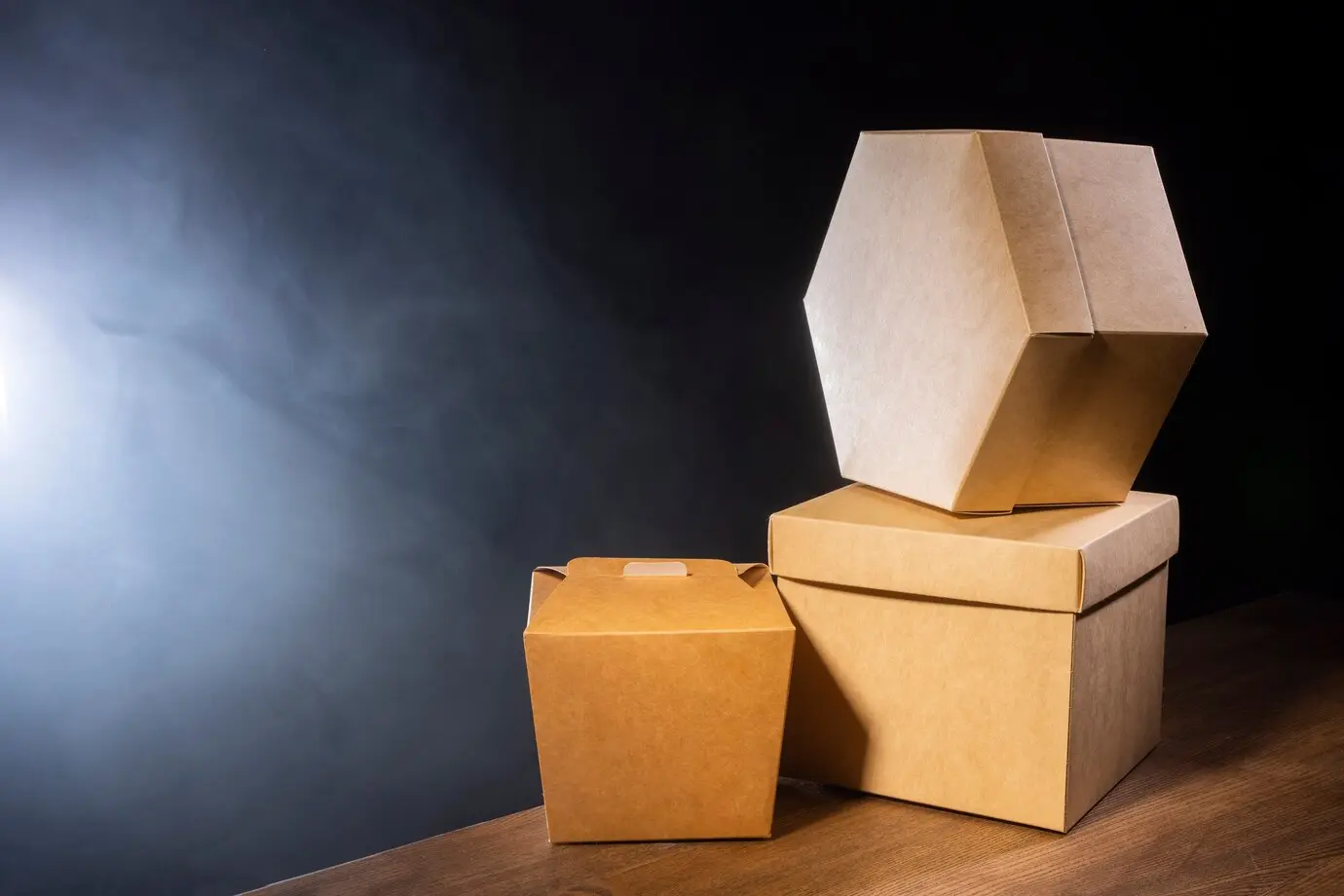What Is Shelf Ready Packaging? Benefits & Features Explained

If you’ve ever walked through a retail store and picked up a product without even realizing what drew you to it, chances are, shelf ready packaging played a role.
It’s more than just a box, it’s a quiet salesman sitting on the shelf, doing its job without saying a word.
Let’s unpack (yes, pun intended) what shelf ready packaging really means, why brands are leaning into it, and how it impacts everything from supply chain efficiency to customer experience.
What Are The Benefits of Shelf-Ready Packaging?
Shelf-ready packaging isn’t just about looking good on a shelf. It’s about making things easier for retailers and customers.
Let’s break it down.
- Faster Stocking, Less Hassle
Retail staff don’t have time to fiddle with complicated packaging. Shelf-ready boxes are designed to be opened without tools. No box cutters. No mess. Just open, place, and move on. This speeds up replenishment and means products hit the shelf faster. - Clear Visibility in the Supply Chain
A well-designed box doesn’t just look sharp on the shelf, it’s also easy to spot in a warehouse. That means quicker identification, smoother logistics, and fewer errors when restocking. For perishable sectors, pairing shelf-ready packaging with ERP software for seafood industry helps ensure freshness, compliance, and real-time inventory visibility across the supply chain. - Better Shelf Presentation
When packaging doubles as a display, you get more control over how your product looks in-store. Clean lines and consistent branding help your product stand out and be found faster. That matters when shoppers are scanning shelves in seconds. - A Smoother Shopping Experience
Customers appreciate simplicity. Shelf-ready designs let them grab what they need without disrupting everything else. Whether it’s a candy bar at checkout or a headache reliever in the pharmacy aisle, the experience is quicker and more satisfying. - Stronger Brand Recognition
When your product looks the same every time (clean, familiar, easy to spot) customers remember it. That repeat recognition can translate to loyalty and repeat purchases. - Reduced Damage, Reduced Waste
These boxes are built for transit. Their structure adds protection, which means fewer damaged goods and less waste along the way. - Better for the Planet (and the Budget)
Shelf-ready packaging is often more efficient to ship, takes up less storage space, and is easier to recycle. That’s good news for sustainability goals! - Potential Sales Boosts
Products that are easier to access tend to sell better. Especially those little impulse buys. If it’s visible and easy to grab, it’s more likely to end up in someone’s cart.
How To Build Shelf-Ready Packaging For Your Product
Creating shelf-ready packaging (SRP) isn’t just about putting your product in a box!
It’s about building a smart, efficient system that works for retailers, looks great for shoppers, and protects your product every step of the way.
Here’s how to do it right.
1. Understand Your Product’s Needs
Start by asking a few key questions:
- What’s the size, shape, and weight of your product?
- Is it fragile?
- How will it be displayed?
A compact, stackable snack box needs something totally different than, say, a delicate skincare set. Think function before form.
2. Explore Innovations
From tear-away display cases to biodegradable inserts, there are tons of ways to innovate. A good packaging partner can help you tap into new technologies and ideas to make your design stand out and work harder.
3. Get The Dimensions Right
Measure everything (your product, any inserts, and extra space you might need). Then shrink it down where you can. Smaller boxes reduce material costs, prevent shipping damage, and make your packaging more sustainable.
4. Know Your Volume
How much are you producing? 500 units? 50,000? Your order size will affect the printing method, cost, and production timeline. Larger runs usually mean lower cost per unit, but you’ll also need a plan for storage and shipping.
5. Make It On-Brand
Don’t treat SRP like an afterthought. Use your colors, fonts, and brand voice. This is a chance to make a powerful impression. A well-designed display doesn’t just hold your product; it tells your story at a glance.
6. Set a Realistic Budget
Think beyond just printing costs. Consider protective packaging, fillers, coating, fulfillment, and shipping. Then weigh that against your product’s retail price, margins, and shelf life. Planning this early avoids surprises later.
7. Design Smart
Focus on visibility and usability.
- Can customers see and reach your product easily?
- Is the logo readable from across the aisle?
- Is it easy for store staff to open and place?
Make sure your packaging looks good, stacks well, and keeps restocking fast. That’s the trifecta.
8. Choose a Printing Method
Each print style has its pros:
- Lithography for high-quality, large runs.
- Digital for speed, flexibility, and design variation.
- Flexo for simple, budget-friendly jobs.
Your choice will depend on your design needs and order volume.
9. Consider Coatings + Finishes
Want your packaging to stand out or stay protected? Choose from options like:
- Gloss or matte lamination for visual impact
- UV or AQ coatings for durability and shine
- Foil stamping, embossing, or window cuts for added flair
10. Create a Dieline and Prepare Artwork
Your dieline is the blueprint for your packaging. It needs to be precise, every panel, fold, and cut matters. Once that’s done, drop your artwork in, double-check the print specs, and you’re ready for a prototype.
11. Build a Prototype
Before mass production, get a physical sample. This helps you catch any design or fit issues early and gives you peace of mind that the final product will work as expected.
12. Move to Production
Once everything looks good, it’s time to go. Your packaging gets printed, cut, folded, and shipped. If you’re working with a good packaging partner, they’ll also help coordinate delivery and plan for future reorders.
Sustainability in Shelf-Ready Packaging
Today’s consumers are looking for brands that align with their values, and eco-conscious packaging is one of the easiest ways to show you’re listening.
In fact, a 2021 Think With Google report found that 82% of shoppers consider sustainability a key factor in their purchase decisions.
You can simply start with the basics:
- Reduce waste by eliminating unnecessary materials and downsizing your box.
- Reuse when possible by designing for secondary uses or offering returnable containers.
- Recycle by choosing materials that are widely accepted in recycling streams—and clearly labeling them.
You can also explore options like post-consumer recycled paper, biodegradable inserts, and water-based inks.
Moreover, look for packaging materials certified by trusted organizations like:
- FSC (Forest Stewardship Council)
- SFI (Sustainable Forestry Initiative)
- PEFC (Programme for the Endorsement of Forest Certification)
Or, go even greener with nontraditional substrates like sugarcane bagasse, mushroom foam, or hemp-based board. These reduce reliance on virgin materials and lower overall impact.
It also helps to localize your supply chain. The shorter the distance between your packaging manufacturer and your warehouse, the smaller your carbon footprint. Working with a local partner not only helps the planet, it also makes your timeline more predictable and efficient.
Finally, right-sizing your packaging minimizes the material used, reduces shipping weight, and lowers fuel emissions during transport. It’s a win for your budget and the environment.
Other Things To Keep In Mind For The Best Shelf-Ready Packaging Design
Here are a few important elements to keep top of mind as you refine your SRP approach:
Track Packaging Inventory Closely
Stay ahead of demand by maintaining a clear view of your packaging stock.
- Did you run out of packaging during a peak season?
- Did surplus sizes go unused?
Regular inventory audits help you avoid delays, reduce waste, and optimize your ordering process.
Monitor Shipping Breakage
If products are arriving damaged, it’s time to reassess your packaging solution.
Set a tolerance level for breakage and monitor whether you’re staying within it. If not, consider:
- Reinforcing packaging with better cushioning
- Testing alternate carriers
- Reviewing your structural design for weak points
Prioritize Ease of Use
The best SRP makes restocking fast and friction-free.
- Include perforated tear-away sections
- Make packaging easy to open, display, and replenish
- Avoid over-complicated designs that frustrate retail staff
Choose Quality Materials
Cheap materials can lead to damaged goods, messy shelves, and unhappy customers.
Use sturdy, reliable materials that protect your product and consider recyclable or biodegradable options when possible.
Stay True to Your Brand
Your packaging should instantly communicate your brand through:
- Signature colors
- Recognizable fonts
- Clear logos and taglines
Size Matters
Design your packaging to fit standard retail dimensions, making it:
- Easy to stack or double-face
- Space-efficient without sacrificing protection
- Aligned with retailer requirements
Always Test First
Before a full launch, test your SRP in real-world conditions.
- Get feedback from retail partners
- Assess how it performs during shipping, stocking, and customer interaction
- Make tweaks before committing to mass production
In a Nutshell
Shelf-Ready Packaging isn’t just about looking good, it’s about performing well at every step, from production to shelf.
By aligning design with functionality, sustainability, and brand consistency, you can boost efficiency, reduce waste, and make a powerful impression in-store.
The goal? Packaging that’s easy to open, easy to stock, and hard to ignore.
FAQs
What industries can benefit from shelf-ready packaging?
Grocery, electronics, cosmetics, pharmaceuticals, beverages, and household goods, all benefit from faster restocking, better product visibility, and improved shopper convenience.
What is SRP in manufacturing?
SRP (Shelf-Ready Packaging) in manufacturing refers to packaging designed to go directly from shipping to shelf with minimal handling, making restocking easier and more efficient.
What is the difference between shelf-ready packaging vs retail-ready packaging?
They’re often used interchangeably, but technically:
- Shelf-Ready Packaging focuses on ease of display and restocking.
- Retail-Ready Packaging includes that plus marketing appeal, branding, and shopper engagement.

Jennifer James
My specialty is developing cost-effective, attractive, and appropriate packaging for protecting products. I am working with the company to design custom packaging that meets the client’s requirements.
